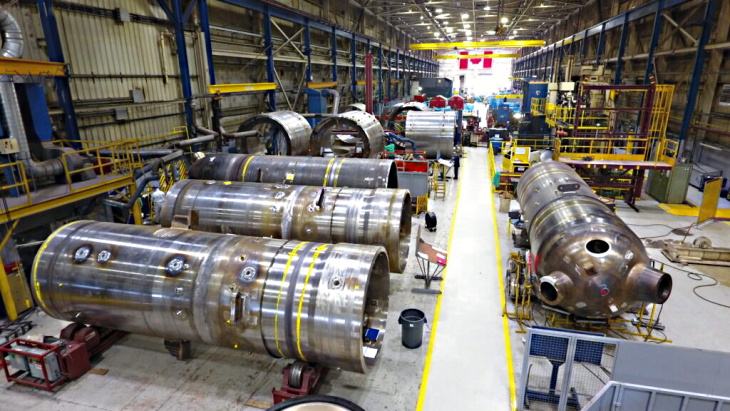BHP Billiton, in the process of evaluating a A$5 billion ($4.3 billion) proposal to expand the Olympic Dam operation, has floated an alternative treatment strategy with its stakeholders. This would involve exporting copper concentrate rather than refined copper, and hence some uranium contained in it.
Because Olympic Dam ore contains copper, uranium, silver and gold in close association, the common procedure of simply selling a copper concentrate with precious metals has not been viable, since the presence of uranium would create both processing and safeguards complications for the smelter operator. Most of the uranium is removed at the flotation stage when the copper sulfide is separated from the remainder of the ore, which is then tailings. At Olympic Dam, the main uranium recovery is from acid leaching of these tailings.
Secondary uranium recovery is from acid leaching the copper concentrate, which then goes on to be smelted, containing about 45% copper and 0.01 to 0.15% uranium. At present smelting is done on site, followed by electro refining, and the further traces of uranium are recovered from slag and slimes at these two stages.
The new proposal being considered would export the copper concentrate after its acid leaching stage to significantly reduce the investment cost of the expansion, since smelting and refining capacity for the copper increment would then not be required. The infrastructure needed to operate it - notably electricity - would also be less.
Enough uranium would still be present to require the application of safeguards, so that all the uranium would be accounted for. Hence smelting could only be undertaken in one of 36 countries with which Australia has a bilateral safeguards agreement, plus the heavy industry infrastructure required. China has been mentioned, but Japan and South Korea might also be candidates.
BHP Billiton executives have reportedly approached a skeptical federal government on the matter. State governments are also concerned about job and revenue losses.
If all the copper from the expanded OD operation were exported as concentrate, an average of 1.2 million tonnes per year would be involved, containing up to 2000 tonnes of uranium. The major part of the uranium - about 13,000 tonnes per year, would be recovered and processed as at present.
Further information
BHP Billiton
WNA's Austrlia's Uranium and who buys it information paper
Alternative treatment strategy for Olympic Dam
BHPBilliton has floated analternative copper treatment strategy with its stakeholders that wouldinvolve exporting copper concentrate rather than refined copper, andhence some uranium contained in it.




_69614.jpg)

_15447.jpg)





